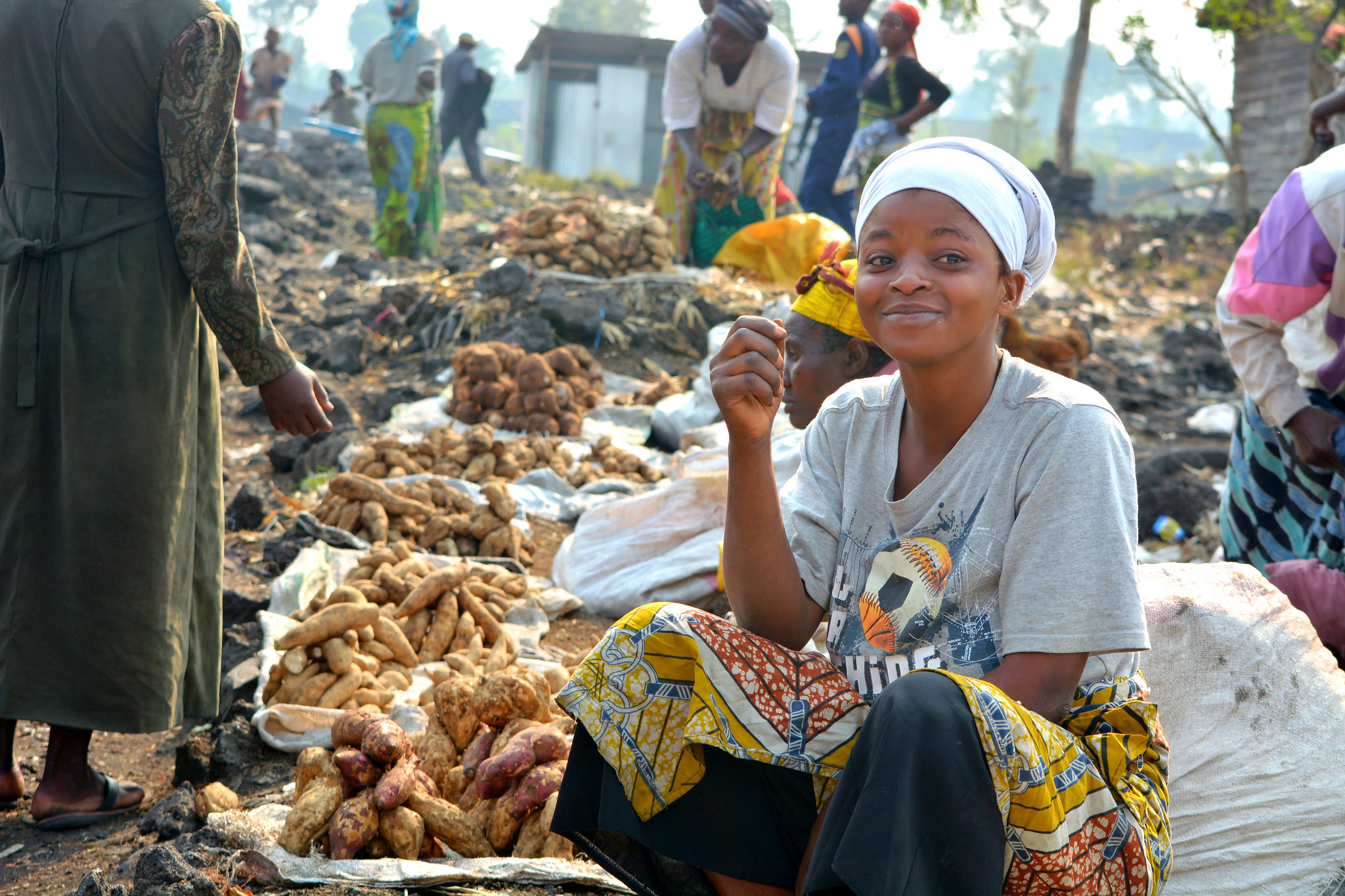
Learn from past crises to protect women and girls from hardship and combat the food crisis, urges a recent Nature comment. It is authored by Elizabeth Bryan (IFPRI), Claudia Ringler (IFPRI) and Nicole Lefore (ILSSI), and co-signed by 22 experts on gender and food systems, including three CGIAR gender researchers.
Coming on the heels of the COVID-19 pandemic, today’s global food crisis, fueled in part by the war in Ukraine, is the latest emergency set to disproportionately harm women and girls and further exacerbate inequalities.
Alarmed by crisis-response planning that is frequently gender blind, the International Food Policy Research Institute in June this year brought together funders, grassroots farmers, international non-government organizations, United Nations agencies and researchers to draw out lessons from past crises that can help aid programs and planners protect women and girls. Their recommendations are summarized in a newly published comment in Nature.
Crises hit women hardest, but aid doesn’t follow
“Crises hit women and girls especially hard, particularly in low- and middle-income countries. It is estimated that the COVID-19 pandemic pushed an additional 47 million girls and women into extreme poverty, reversing decades of progress,” write the authors.
They go on to list several additional examples that underscore how women and girls bear the brunt of crises, including that they might lose paid work, be burdened with additional care work, have to sell off assets and need to forego eating to feed their families. Other gendered impacts of crises include women’s increased risks of facing violence and their loss of income, education and business opportunities.
But the authors point out a concerning discrepancy in crisis responses:
“Yet aid programmes tend to favour men. Subsidy and voucher schemes often target male-dominated commercial agriculture over the plots on which women grow food to feed their families and to sell informally. Obtaining subsidies often requires property deeds and digital platforms, both barriers for the most marginalized women in particular.”
While the authors concede that ensuring gender equity in urgently needed responses to the food crisis adds time and complexity, they add:
“It cannot remain standard practice to ignore how policies affect people differently — with inequality on the rise, that must stop. This includes providing resources to help women and girls cope with crises in the short term, and challenging the systems that perpetuate inequality.”
Eight recommendations based on lessons from past crises
Collating lessons from past crises, including the COVID-19 pandemic and the 2007–08 global food-price crisis, the 3 authors and 22 co-signatories recommend 8 concrete strategies “that can buffer women and girls against short-term hardships and reduce long-term gender inequalities”:
- Gather evidence on women’s needs
Gathering data that are broken down by gender can help aid programs and crisis-response planners monitor whether their interventions reach and benefit women. For example, “it is important to know whether subsidized fertilizer is spread on fields farmed by men or women, or whether extension agents reach women.”
- Extend anti-violence schemes
Prevention is key in protecting women and girls from gender-based violence, which tends to be on the rise during crises: “Targeted incentives can help. For instance, cash transfers might mean that parents are able to feed their children and feel less pressure to marry off daughters.”
- Expand social protection
Lessons from both the 2007–08 food-price crisis and the ongoing pandemic demonstrate that targeted social protection programs can help protect families’ food security: “In the face of the current crisis, expanding these programmes should be a priority, especially to women who are not formally in the labour force and those whose businesses were forced to close or are struggling.”
- Increase opportunities for work
Training opportunities, access to finance, adjustments to public procurement programs that benefit women-led businesses and services such as childcare are all practical strategies that can help enable women to go (back) to work outside the home.
- Support women’s groups
Already established women’s groups can be an entry point for aid programs and planners wanting to target information or resources where they are most needed. Also, “women’s groups boost resilience by providing a platform for collective action, sharing labour and childcare responsibilities, organizing transport, accessing credit and savings, and disseminating information.”
- Tailor financial services
Conventional financial products often fail to reach women, but adjustments to financial products can help tear down such barriers: “PEG Africa, a private firm providing solar systems to rural households, [has been] attracting female clients by reducing the collateral and down payments required. The firm also worked with women to build their creditworthiness and capacity for financial documentation.”
- Broaden access to information
Women generally have less access to information than men, and therefore agricultural extension services need to make sure that their information is relevant to women and reaches them. “For instance, women who lose access to expensive agrochemicals are in particular need of information on farming practices that require fewer inputs and are less labour-intensive.”
- Promote women’s leadership
“Funders and governments are planning how to implement, coordinate and monitor their response to the food crisis. If women are formally represented across this process, programmes will be more effective at meeting women’s needs and improving gender equality.”
In conclusion, the authors underscore that “this food crisis is not the last crisis the world will face, but it should be the last one in which women and girls carry this grossly unequal burden.”
“To build more equitable food systems, responses to the global food crisis must do better than in the past. There is no place for responses that reinforce an unjust status quo and widen gender inequality.”



